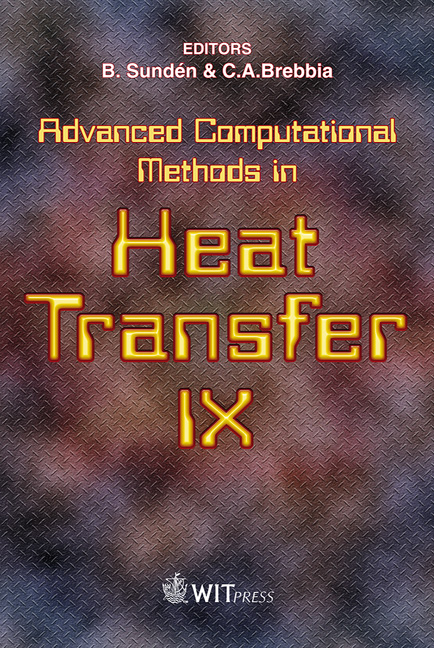Radiative Heat Transfer In A Model Gas Turbine Combustor
Price
Free (open access)
Transaction
Volume
53
Pages
9
Published
2006
Size
709 kb
Paper DOI
10.2495/HT060401
Copyright
WIT Press
Author(s)
M. C. Paul & W. P. Jones
Abstract
In this paper we have carried out a three-dimensional numerical study to investigate the radiative heat transfer in a model gas turbine combustor, representative of the Rolls-Royce Tay combustor. The Discrete Ordinate Method (DOM/Sn) in general body-fitted co-ordinate system is applied to solve the filtered Radiative Transfer Equation (RTE) for the radiation modelling and this has been combined with a Large Eddy Simulation (LES) of the flow, temperature and composition fields within the combustion chamber. The radiation considered in this work is due only to the hot combustion gases notably carbon dioxide (CO2) and water vapour (H2O) also known as non-luminous radiation. The instantaneous results of the radiation properties such as the incident radiation and the radiative energy source or sink as the divergence of the radiative heat fluxes are computed inside the combustion chamber and presented graphically. Keywords: discrete ordinates method, large eddy simulation, radiative heat transfer, turbulent combustion. 1 Introduction A large part of the total heat transfer in a combustion chamber, whether it is a gas turbine engine, a car engine or a furnace, occurs by radiation from the flame. This radiation has two components: (i) the ‘non-luminous’, which emanates from the combustion gases notably carbon dioxide (CO2) and water vapour (H2O), and (ii) the ‘luminous’, which is mainly due to the soot formed in the flame. The prediction of wall temperatures is an important aspect in the design of practical engine combustors and this clearly requires that the radiative heat fluxes be predicted accurately. An inability to predict the wall temperatures may lead to an exces-
Keywords
discrete ordinates method, large eddy simulation, radiative heat transfer,turbulent combustion.





